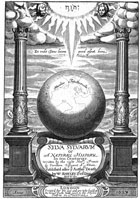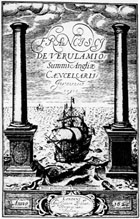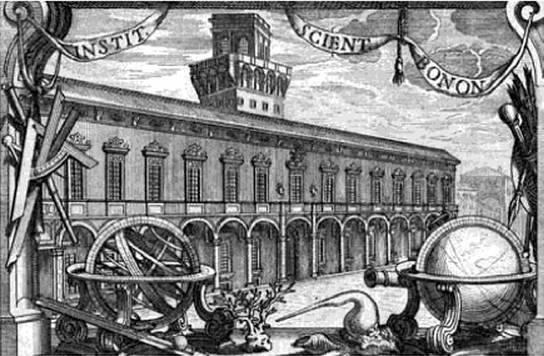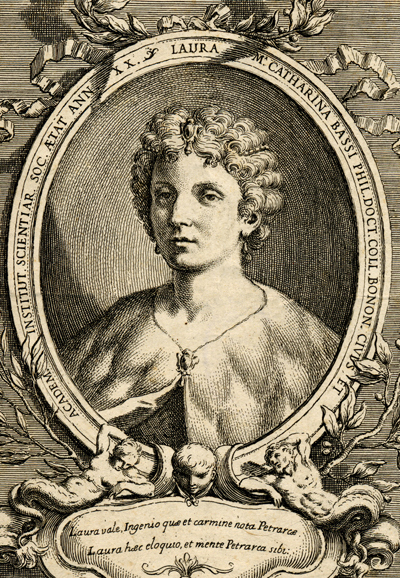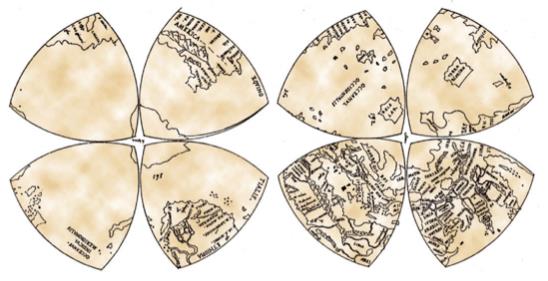Further Thoughts
Readers of The Invention of Science will be interested in Christopher Graney’s three blogs on the Two Spheres Theory. The last, with links to the first two, is here: www.vofoundation.org/blog/copernicus-high-seas-iii.
My view on Joel Mokyr’s latest account of the triumph of the West, in the December 16/January 17 issue of Standpoint magazine.
I have written a blog post for HuffPost Canada. Take a look.
A few brief points about Dmitri Levitin’s review in the LRB:
A short summary of corrections to The Invention of Science:
I was an invited speaker at the March 2016 meeting of the American Physical Society in Maryland, in the session on Steven Weinberg’s To Explain the World. Here is my talk:
My reply to Benjamin Breen:
Here is an expanded version of my exchange with Philip Ball; the earlier version (and his response) are available on his website (see below).
See my exchange with Philip Ball.
See my essay on Garlic and Magnets in the January 2016 issue of History Today.
Writing for Physics World (10 December 2015), Philip Ball’s excellent essay discusses the assertion that bad scientific ideas “held back” good ones throughout human history, delaying the progress of science.
“Women were denied membership in all early modern learned societies.” (Invention of Science, p. 6). This isn’t quite right. Laura Bassi (p. 474) was elected a member of the Accademia delle Scienze dell’Istituto di Bologna in 1732, and gave papers; Emilie du Châtelet was elected to the same Academy in 1746, although she never attended (also p. 474). The Accademia had been founded in 1714, and the word Scienze in its title means “Natural Sciences” (as it does in the title of the French Académie des Sciences, founded in 1666 – a rather obvious refutation of the claim that, to quote John Henry, “Our present use of the word ‘science’ was first coined in the nineteenth century, and, strictly speaking, there was no such thing as ‘science’ in our sense in the early modern period”). The Academy of Bologna is unique. Eva Ekeblad was elected to the Royal Swedish Academy of Sciences (Kungliga Vetenskapsakademien, founded 1739, and again an academy of natural sciences) in 1748 — but in 1751 her status was downgraded to that of honorary member as it was decided that the statutes did not allow the election of women. The first female member of the Academy of Sciences Leopoldina (founded in 1652 as the Academia Naturae Curiosorum) was elected in 1789.
This correction was prompted by Cate Hirschbiel’s review, in which she writes “Although the major players in the scientific revolution were male, Wootton mentions quite a number of obscure male contributors, so it would have been nice to include at least a few women.” I was sufficiently concerned by this to go back and check: in addition to Bassi and du Châtelet, the book does include Maria Cunitz (p. 6), Margherita Sarrocchi (p. 226) and Margaret Cavendish (pp. 234, 569), two translators of scientific texts (Aphra Behn and Elizabeth Carter — p. 474), and Mary Shelley’s Frankenstein (p. 490). Meredith Ray’s Daughters of Alchemy came out too late (April 2015) for me to insert more than a passing reference (p. 6).
Overall though, the picture is bleak. Mary Somerville (p. 28) and Caroline Herschel were elected honorary members of the Royal Astronomical Society in 1835, but even in that relatively progressive society women were not eligible for full membership until 1915. Women were not elected fellows of the Royal Society until 1945. Worse still, the first female full member of the French Academy of Sciences was elected in 1979.
Leonardo da Vinci and the terraqueous globe.
It was bound to happen – you work for years on a book, read everything that seems relevant, see it through the press, and then immediately you discover something you should have included. Having passed the last set of proofs of The Invention of Science I went off to Suffolk on holiday. In the lovely seaside town of Aldeburgh, in the excellent pop-up second-hand bookshop on the High Street, my gaze fell upon a book by Stephen Jay Gould that I hadn’t read before, and I happily purchased it thinking it would make the perfect holiday reading.
The first chapter of Leonardo’s Mountain of Clams and the Diet of Worms (2008) is about Leonardo da Vinci’s Leicester codex, which is primarily devoted to the study of water (and which was purchased by Bill Gates in 1994 for $30,802,500). The codex contains, amongst much else, the first account of earthshine, which Leonardo believed was caused by the light of the sun being reflected onto the moon by the earth’s oceans, and it is possible that the later accounts we find in Sarpi and Galileo derive from a reading of Leonardo, as copies of this manuscript circulated widely. Two problems that Leonardo addresses in the codex relate directly to chapter four of The Invention of Science, and had I read Gould earlier I would have discussed Leonardo in that chapter. Too late now! (I also recommend chapter 15 in Gould’s volume, on Robert Boyle, which is an excellent discussion of Boyle’s views on intelligent design.)
The first problem is straightforward: it derives from the fact that Leonardo dismisses the standard view that the oceans are higher than the land. He thinks the Mediterranean is higher than the Atlantic because so many rivers drain into it (fol. 17v) – it is like a bath that stays half-full, even though the plug has been taken out, because the taps are fully open. The consequence of this is that over time it will silt up until it is reduced to nothing more than a vast river. But every large body of water has a curved surface simply because every part of its surface is equidistant from the centre of gravity of the globe, and so the surface of the oceans is always lower than their shores, and the shores of seas and lakes are always higher than the surfaces of the bodies of water (which are often above what Leonardo would have called “ocean level” rather than sea level) they contain (fol. 31r). This all seems so obvious to us that it is difficult to grasp that it was not at all generally accepted until well into the seventeenth century.
This leaves Leonardo with a fundamental problem: where does the water that springs out of the ground near the tops of mountains come from, since water always flows downhill (fol. 30v)? Whether he believed he had solved this problem (which was, as my book shows, much debated into the eighteenth century) depends on whether the present order of the folios of the codex corresponds to the order in which they were written. Leonardo was not, when he wrote the Leicester codex, persuaded that rainwater could account for rivers and mountain springs (fol. 33v – there are great rivers where there is little rainfall), and on folio 32v he says that there is no satisfactory explanation for this phenomenon (any more, he would have added, for he liked comparing the Earth with the human body, than there is an explanation of the force that raises blood to the head – fol 21v – Harvey not having yet discovered the action of the heart as a pump); but on folio 28r he says that there is an explanation: a furnace within the earth turns water there into steam which rises through the mountains and then condenses and emerges as a stream. This leaves the question of what his considered view was open. (Unless you accept Pedretti’s view that the double sheets which make up the codex were added one by one in a pile, in which case fols. 1 and 36 were the first to be written, working through to fols. 18 and 19 which were the last: on this view fol. 28 postdates fol. 32, and presents Leonardo’s considered opinion. But as Martin Kemp points out, fol. 3v appears to be Leonardo’s rejection of the argument of fol. 21v, which suggests that Pedretti is wrong: You can find the original codex with a transcription of the text at http://www.leonardodigitale.com/. Martin Kemp will soon be publishing a complete English translation and commentary. I take Pedretti’s view from Leonardo da Vinci, Codex Leicester: A Masterpiece of Science (1996); Martin Kemp’s essay in that volume, “The Body of the Earth” is fundamental, and Kemp maintains there that Leonardo later adopted the modern view that the rivers derive solely from rainfall; see also Kemp, Leonardo da Vinci: The Marvellous Works of Nature and of Man (1981) and Kemp, ‘The Crisis of Received Wisdom in Leonardo’s late Thought/La crisi del sapere tradizionale nell’ultimo Leonardo’, in Leonardo e l’età della ragione, ed. E. Bellone and P. Rossi, Milan, 1982, 27-52.)
The second problem is more complex, and what I offer here is no more than a preliminary understanding of what Leonardo is saying (which agrees in its main lines with Gould’s reconstruction).
Leonardo is committed to the view that earth and water make up a single system: water places itself in relationship to the earth so that the geometrical centre of the sphere of water corresponds to the centre of gravity of the earth/water complex – what we call the terraqueous globe. (You might think this means that the centre of gravity of the element water corresponds to the centre of gravity of the earth/water complex, but it doesn’t as the earth, being heavier than water and immersed in the water, ensures the two do not correspond – fol. 35v.) As Leonardo says, it would be straightforward if the earth was a perfect sphere within a sphere of water, but the earth is obviously not a perfect sphere and it emerges out of the water; nevertheless there is necessarily an equilibrium point from which the terraqueous globe could be suspended without moving in any direction: that point is the centre of gravity of the earth/water complex. (Leonardo took it for granted that this point was the centre of the cosmos, but he knew that it did not have to be; he thought that the moon was a body rather like the earth, but covered in an ocean, and with its own centre towards which heavy objects were drawn, so he could have conceived of the earth as being in motion just as the moon is, and so, if he had lived longer, he might have been sympathetic to Copernicanism.)
The fact that Leonardo held what is in effect a one-sphere theory of the globe (although he writes of water as a distinct sphere, and doesn’t regard the element earth as a sphere at all) is itself remarkable; but what is even more remarkable is that he nowhere mentions the standard justification given for rejecting the old two spheres theory, in which earth and water had separate geometric centres and centres of gravity. The two spheres theory (as I explain in the book) required that dry land be confined to little more than one hemisphere; the discovery of America, and the realisation that Vespucci had visited antipodes to parts of the Old World, destroyed this theory. But Leonardo nowhere mentions this, and perhaps he was not yet aware of it when he wrote the codex (which is generally believed to have been composed in the years after 1508). Leonardo’s one sphere theory appears to result from a determination to apply Archimedean principles to thinking about the relationship between earth and water, and so he may well have developed his theory before the publication of Waldseemüller’s map in 1507, or before he became aware of the geographical knowledge embodied in that map.
But the most remarkable aspect of Leonardo’s theory of the globe is his account of geological change, for his globe is in constant internal motion. Rivers carry earth down to the seas. Within the Earth water may eat away the supports upholding large sections of the solid globe and they may crash downwards towards the centre of the Earth, exchanging places with the water previously below them (Leonardo believed that the Earth may be hollowed out, and that there may even be water at the centre of the globe; and thus he was prepared to accept the traditional Aristotelian view that water may exceed earth in volume by a factor of ten – fol. 35v — while rejecting the Aristotelian view that the element earth must be at the centre of the cosmos). Both of these processes mean that the centre of gravity of the Earth must shift, and as it does so the waters must move to establish a new equilibrium.
Imagine there is a barbell on the ground in front of you. If you lift it from the centre point it will balance. But if you then move the left hand set of weights towards the centre, the new balance point will move to the right, and the end of the bar on the left hand side will be further from that balance point than it was before. This is what Leonardo believes is happening with the globe – heavier-than-water earth is being moved towards the centre, shifting the centre of gravity and pushing the remaining dry land further away from that centre. This process will, in principle, continue until the rivers have eroded the continents and the Earth becomes, like the moon, covered in an endless ocean.
The proof that this process is at work is that there are fossils of marine creatures to be found at the tops of the highest mountains. As Gould shows, Leonardo does a brilliant job of demonstrating that these fossils were not simply carried there by the Flood, nor were they made out of nothing by astrological influences; they are the remains of living communities. Gould thus takes it that Leonardo has not only demonstrated that parts of the earth that were once under the sea are now at the tops of mountains, but he has also made a good stab at explaining how this might have come to be.
There is one problem though: Leonardo’s theory is a two hemispheres theory. In one hemisphere, he claims, earth is moving towards the centre of gravity of the globe, and this has the (apparently paradoxical) effect of pushing the dry land that remains behind further from the centre of gravity of the globe. But at the other side of the globe the distance between the surface of the land and the centre of gravity of the globe must be getting shorter, and the distance between the surface of the water and the centre of gravity of the globe must be getting longer (fol. 32v). So the historical process must be one in which land is being forced out of the sea in our hemisphere, and is sinking beneath the sea in the opposite hemisphere. In other words Leonardo’s theory depends on the earth not being symmetrical: the geological activity which raised mountains from the ocean floor must be concentrated in one hemisphere (you can see this clearly in his own sketch on fol. 36r). One of the chief centres of geological activity is, Leonardo believes, the Mediterranean, simply because there are so many great rivers flowing into it. For his theory to work the opposite side of the globe must contain few great rivers, and the oceans there must reach towards the centre of the globe, eliminating the possibility of earthquakes in which the earth settles downwards. In other words, Leonardo’s mental map of the globe when he wrote the codex Leicester was still one in which dry land was largely confined to one hemisphere.
It is thus very interesting that Leonardo probably owned a hand-drawn map of the globe produced around 1514 (http://www.myoldmaps.com/renaissance-maps-1490-1800/327-the-da-vinci-globe/ — Martin Kemp assures me in a personal communication that though Leonardo probably owned this map he did not draw it). The map consists of eight equilateral triangles, rather than the twelve gores which were at the time the conventional way of transferring the curvature of the earth to a flat surface so that they could then later be pasted onto a sphere. Why adopt this inaccurate method? The answer is evident: by placing one triangle on top of its opposite partner you can see at once what the antipodes are for any place on the surface of the globe. Leonardo was perhaps testing his notion that the earth could basically be divided into two distinct hemispheres, one in which the land was rising and the other in which it was sinking; the result cannot have been very encouraging, for there is plenty of dry land in the other hemisphere from that occupied by the Old World (but nor would it have been conclusive, since one might still argue that the amount of land there was diminishing – what would have been a conclusive refutation of Leonardo’s theory would have been the discovery of marine fossils in the New World, for they would have proved that both hemispheres were subject to the same, and not opposing, geological forces).
If this account of Leonardo’s views is right, then Leonardo was early in accepting that the Earth is one terraqueous globe (or rather, since like Bodin later in the century, he thought the Earth consisted primarily of water, an aquaterreous globe), and early in accepting that the sea is not higher than the land (a view which we might think would follow from the first, but which contemporaries often thought was a separate question), but slow in accepting that the Earth is fundamentally symmetrical – that land is distributed randomly across its surface.
Gould’s essay on Leonardo also raises a further question, for Gould criticises those who describe Leonardo as basing his knowledge on “experience” – failing to mention that this is how Leonardo himself defines the true sciences. In the Codex he insists that we must not argue from causes to consequences (as the philosophers do) but rather work backwards from experience to identify the causes at work. Gould insists that Leonardo did not just aimlessly experience the world: he sought to address established questions, such as whether the Flood could provide an explanation for fossils. Facts are inseparable from theories. But this is to miss the point of Leonardo’s emphasis on experience: Leonardo thought that experience (the word we would use is “evidence”) could make it possible to answer definitively questions that had puzzled the philosophers for centuries. In the case of fossils this is what he does, and in demonstrating how the surface of the earth has radically changed over time as the result of the action of geological forces he was brilliantly perceptive, even if his two hemispheres model was profoundly mistaken. It is possible – I am no Leonardo specialist! – that by 1514 Leonardo had himself begun to recognize his mistake, in which case his account of how the fossils of marine creatures had come to be on the tops of mountains must no longer have seemed satisfactory, for it depended upon a premise that had turned out to be false.


